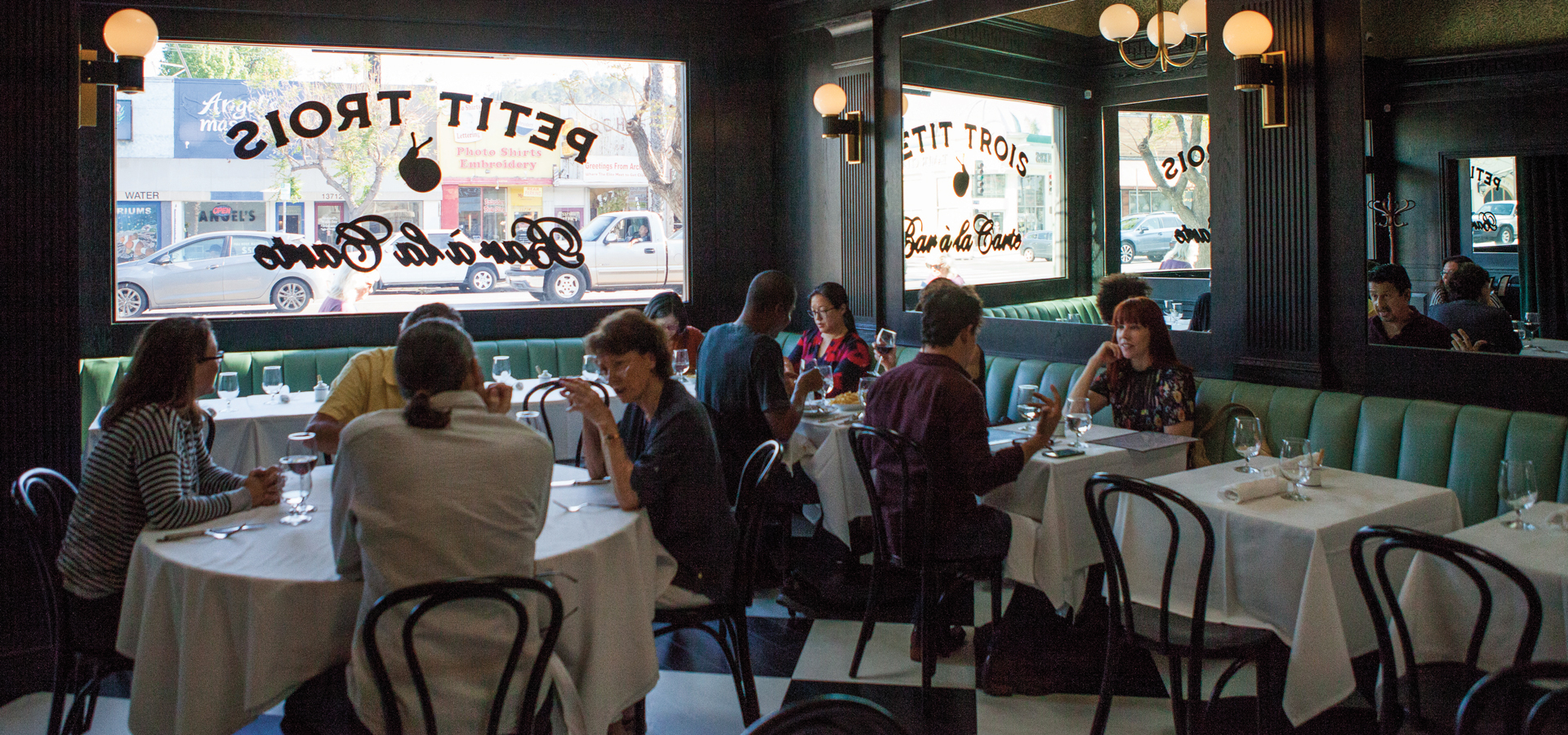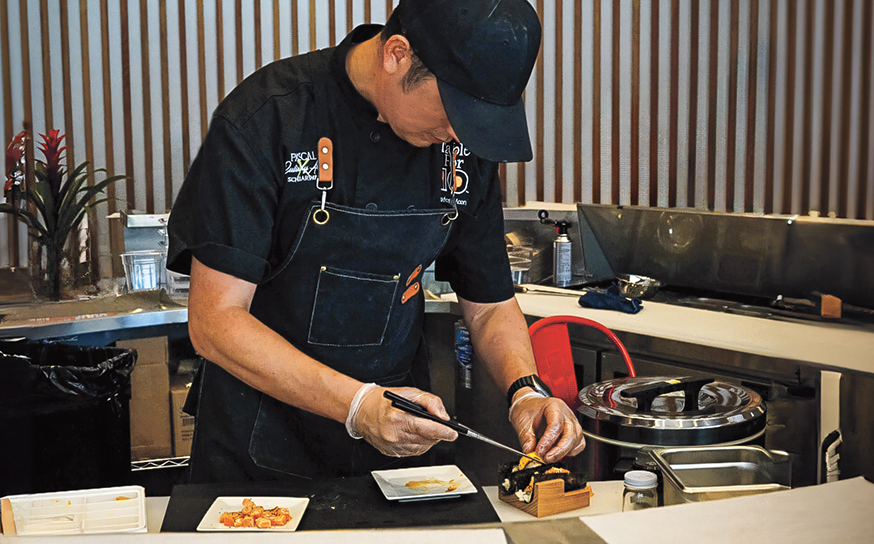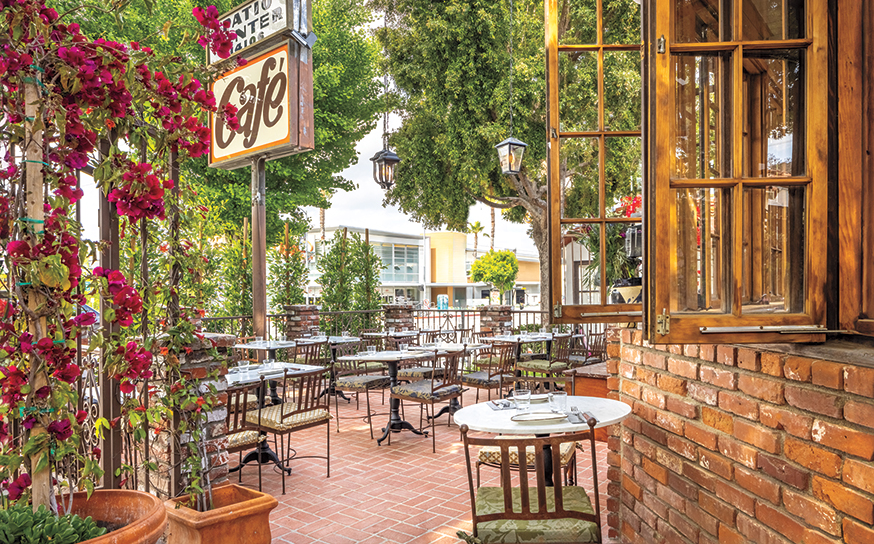Petit Trois Chef Ludo Lefebvre Invites Us Into His Sherman Oaks Home
And yes, we snag a recipe.
-
CategoryEat & Drink, People
-
Written byMichalene Busico
-
Photographed byShane O’Donnell
-
Makeup and hair byCat Sherwin
It is a little after 9 on a Tuesday morning at Ludo Lefebvre’s home in Sherman Oaks. The chef, still pummeled by jetlag after a trip to Japan, has yet to appear. His kitchen, however, is ready for action: A minimalist’s dream of white countertops and concrete-grey surfaces, it is fitted with a six-burner gas range and a five-burner induction cooktop, a programmable teakettle and a Breville stand mixer. A Thermomix—the $1,500 Ferrari of blenders—is prepped to go. Three bookshelves are freighted with the bibles of French gastronomy: Ma Cuisine by Auguste Escoffier, Larousse Gastromique, Ma Gastronomie by Fernand Point, Michel Guerard’s Cuisine Minceur. On the state-of-the-art refrigerator, a crayon drawing depicts the Lefebvre family—Ludo, his wife, Krissy, and their 7-year-old twins, Luca and Rêve—sailing away on what appears to be a very large skillet.
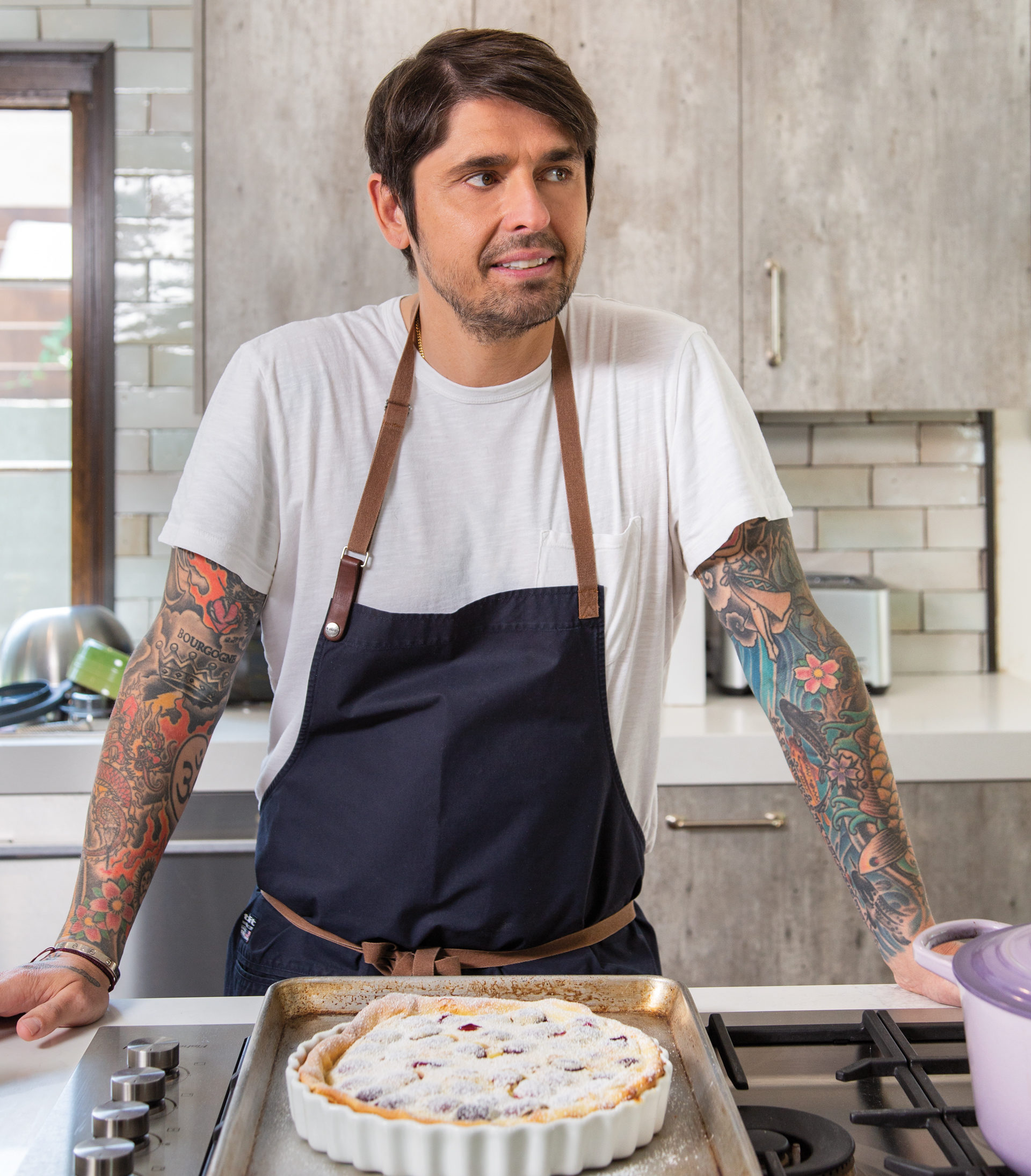
At last, Ludo trundles down the hallway, groggy but game. In addition to running five Los Angeles restaurants—Trois Mec and Petit Trois in Hollywood, Trois Familia in Silver Lake, and LudoBird at Staples Center and Universal CityWalk—the chef is still thigh deep in opening his biggest restaurant to date: a grand version of his acclaimed bistro Petit Trois, located just a few minutes away on Ventura Boulevard. To mark his first restaurant in the Valley—and his renewed excitement about the classics of French cooking—he has invited us over to make the custardy cherry clafoutis his mother baked when he was growing up in Burgundy. Ludo is famous for transforming simple dishes like this into shockingly delicious versions of themselves—his tender, melt-in-your-mouth omelet and garlicky, browned-butter escargots at Petit Trois come to mind—so there is reason to expect this will be the most luscious clafoutis on Earth.
“This is a big memory dish, and it’s a good dish—quick-cooking and easy to bake,” he says. “We’re making it with cherries, but you can go to the market, pick whatever fruit you can find, and it will be good.”
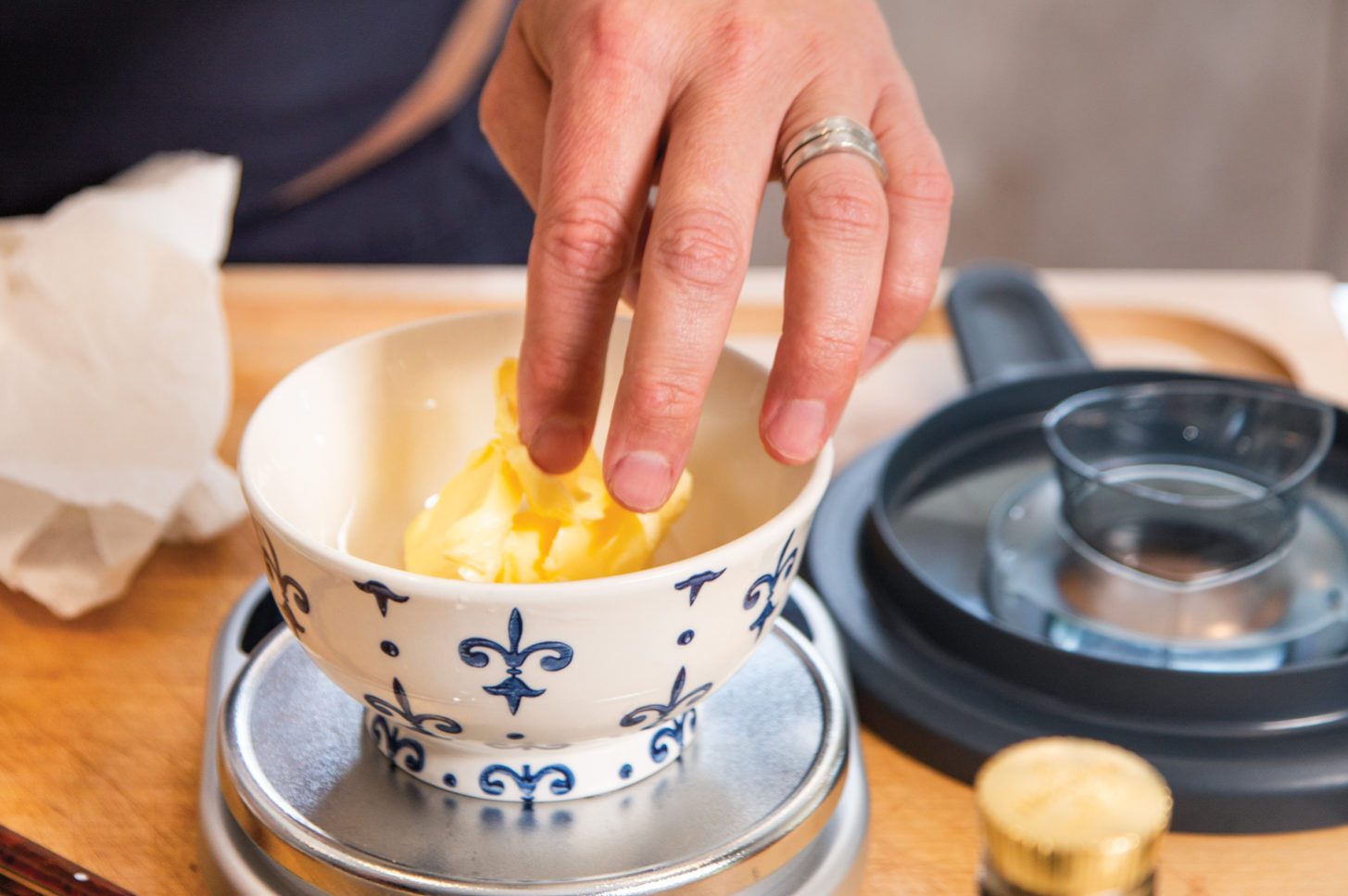
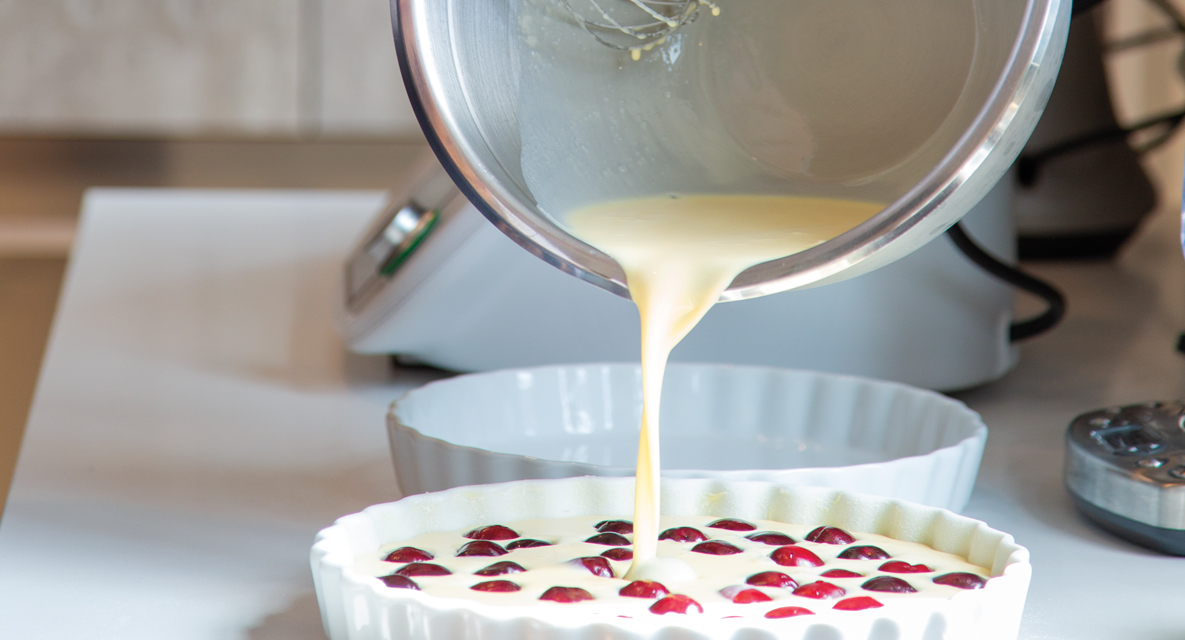
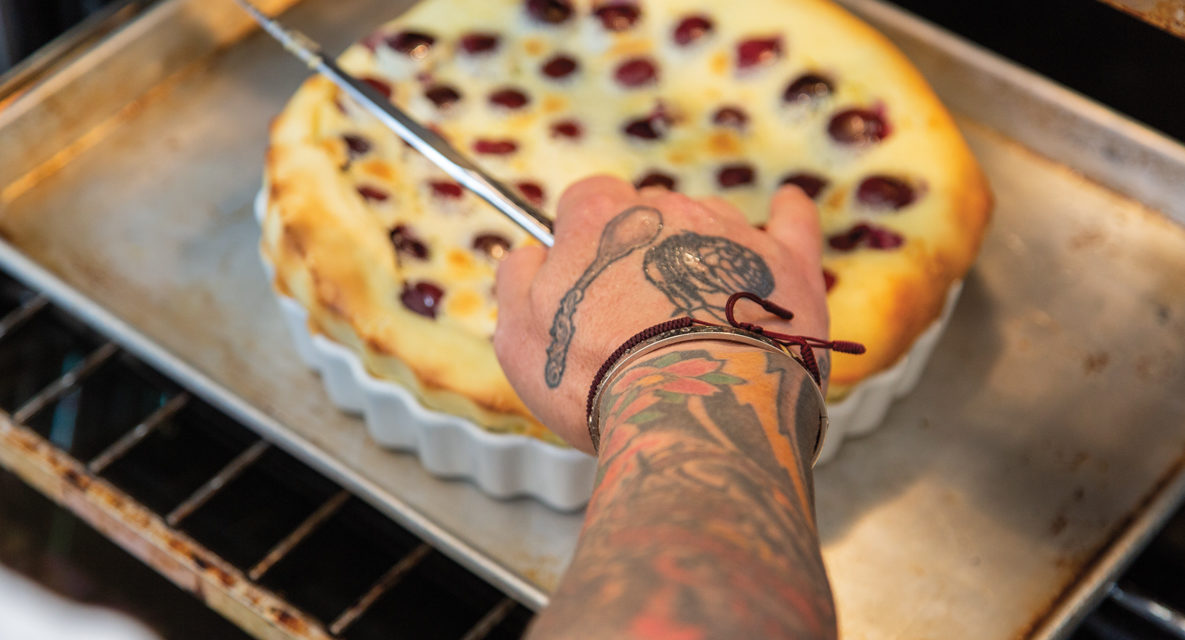
Cherry ClafoutisLudo grew up eating this classic French custard cake. This is his mother’s recipe, give or take the glug of Cognac, and he loves its simplicity and seasonality. Make it with whatever fruit is at peak ripeness—sliced peaches, plums, nectarines, figs or apples—substituted for the cherries. Use salted or unsalted butter (he prefers salted). Bake it right before you serve it or a day or two ahead. Just store it in the refrigerator and bring it back to room temperature. Have it for breakfast, a snack or dessert. The main thing is don’t fuss: Its charm is its simplicity.
Put the milk, eggs, egg yolks, sugar, melted butter, Cognac or kirsch, vanilla, salt and 2/3 cup flour into a blender. Blend until completely smooth, about 30 seconds. Cover and refrigerate for at least 2 hours. (Batter can be made up to 2 days ahead and refrigerated.) You can also mix the batter in a large bowl with a whisk. Preheat the oven to 400˚. Generously butter the bottom and sides of a 10-inch round baking dish. Dust with flour and tap out any excess. Rinse and stem the cherries and let dry. Do not remove the pits: You want the cherries to bake intact and not release their juices. Place the cherries in the baking dish with a little space between each of them. Remove the chilled batter from the refrigerator and give it a few stirs to even the texture. Carefully pour the batter into the baking dish, letting it flow between the cherries but not over them. The tops of the cherries should remain exposed after all of the batter is added. (If there is leftover batter, make a second, smaller clafoutis.) Place the clafoutis on a baking sheet and bake on the center rack of the oven for 45 to 50 minutes, until the clafoutis is puffed and lightly golden. The surface will be slightly resistant to the touch, and a knife inserted into the center will come out hot. Let cool on a rack and generously dust with powdered sugar. Cut into wedges and serve warm or at room temperature. And be sure to warn your guests about the pits. |
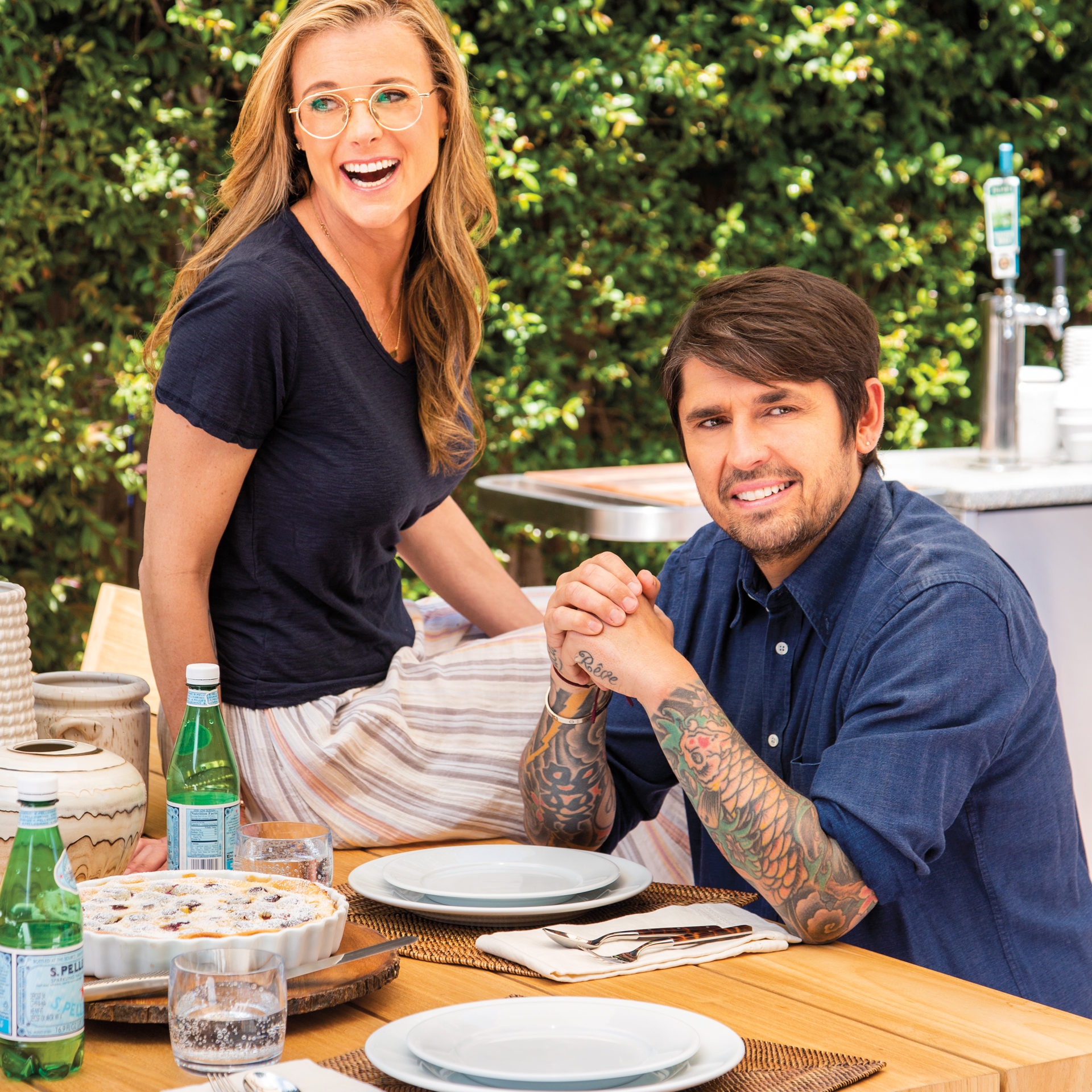
With that, he ties on an apron and turns to the Thermomix—don’t worry, an ordinary blender or just a bowl and a whisk will also do. In a series of precise motions, he adds milk, flour, eggs, sugar, vanilla, a pinch of salt, a glug of Hennessy XO Cognac and melted butter. Is there any particular order of adding ingredients? “Doesn’t matter!” he says, switching on the machine. In less than a minute, the mixture is smooth and perfectly liquid. “This is like a crepe batter,” he explains. “So you want no lumps—no lumps!—or the clafoutis will get tough. Very tough!”
“We wanted to open a restaurant in the Valley 10 years ago. But it took us a while to f ind the right space. I want this to be a restaurant for families…I want them to love it for the food, but also as a place to celebrate life.”
He slips the batter into the refrigerator to rest for a couple of hours and retrieves a batch he made earlier. After slathering a porcelain baking dish with butter and flour, he arranges a couple dozen plump cherries across the bottom. In keeping with the traditional recipe, he leaves the pits. “The one thing you want to remember for this dish: If you use cherries, be sure to keep in the seeds,” he says. “If you don’t, they will lose their juices when they cook.”
Most recipes for the dish also claim the pits add a touch of almond flavor, but Ludo isn’t buying it. “Some stuff in cooking,” he says, making a face, “is a little exaggeration. I don’t think the seeds add flavor.”
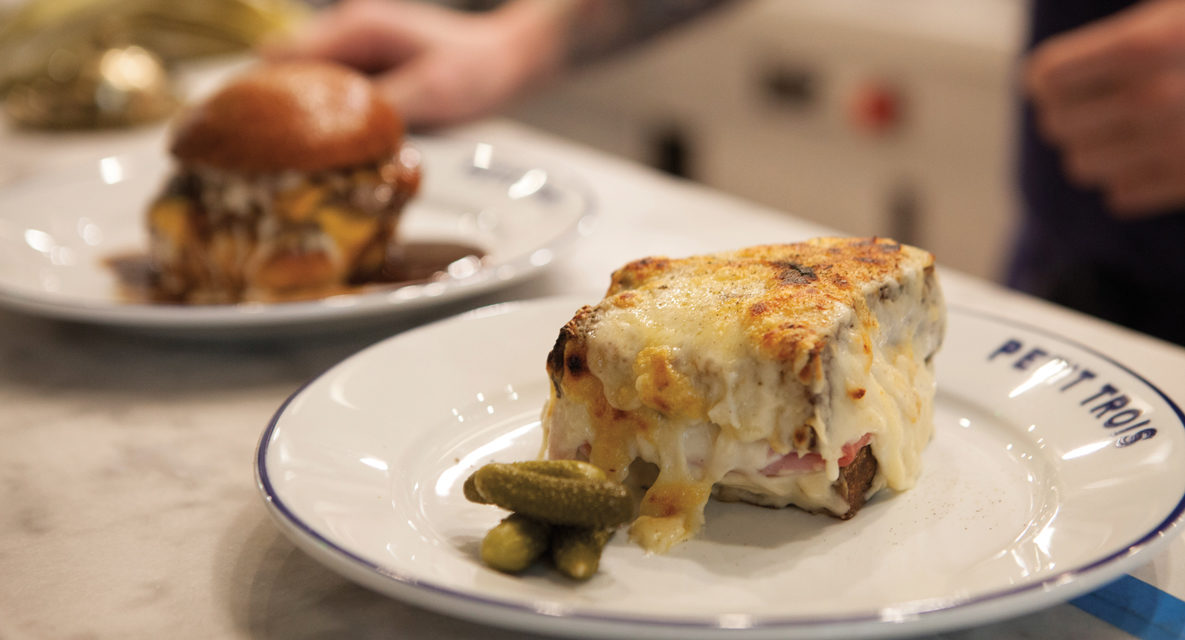
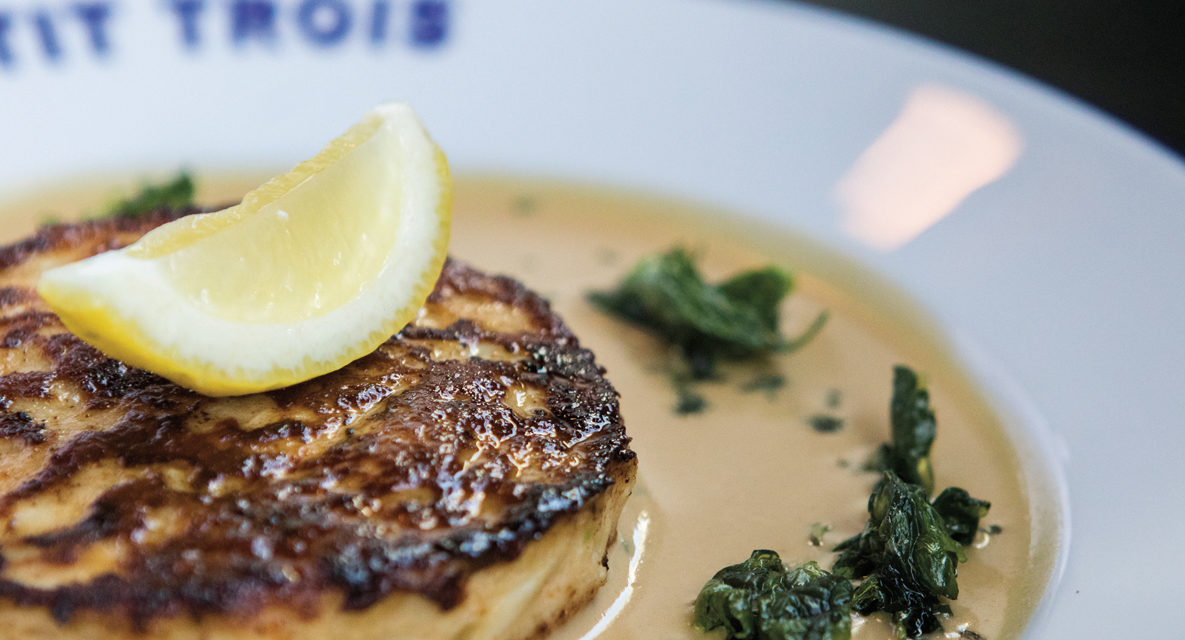
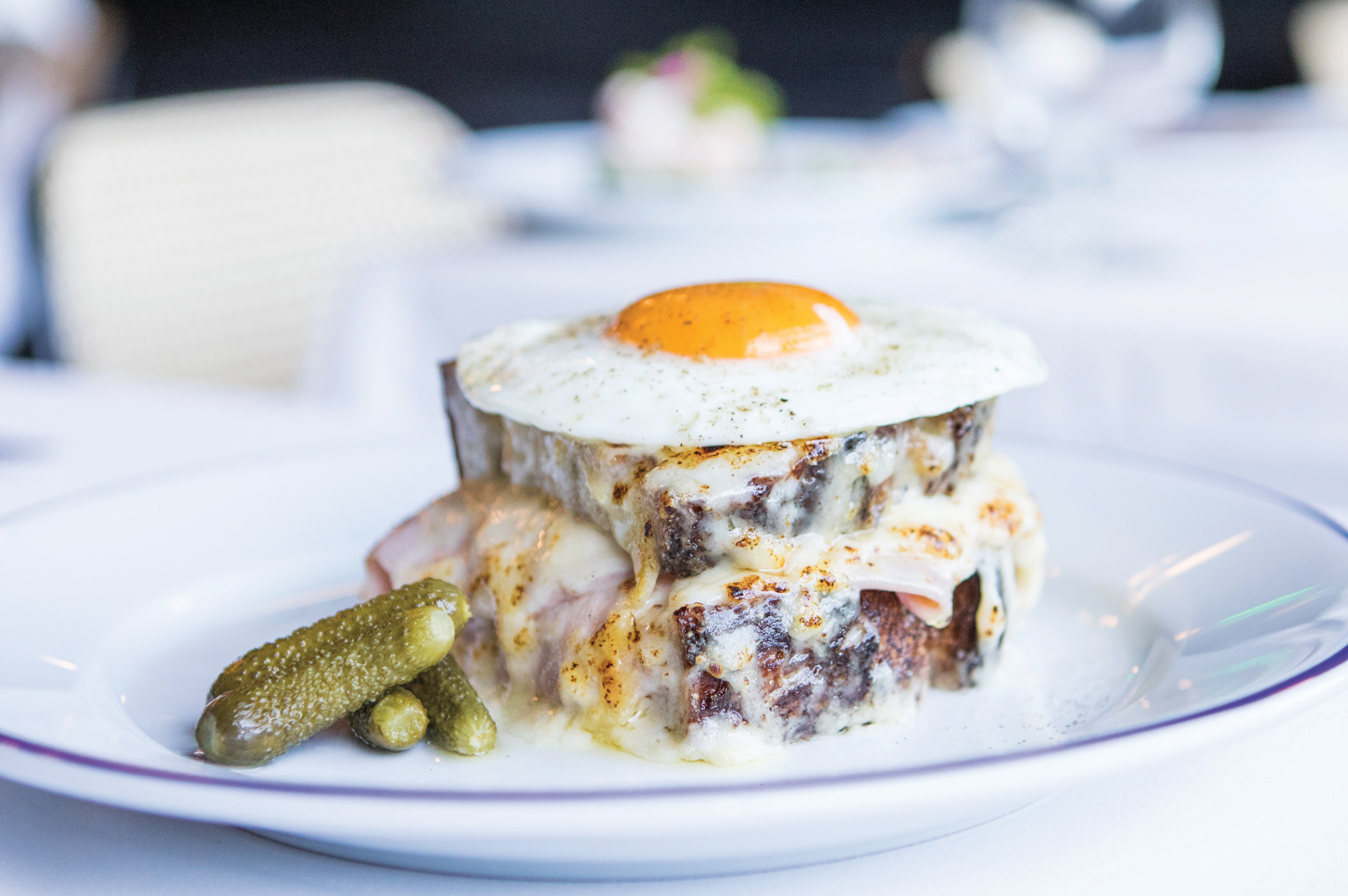
He carefully pours in batter, letting it flow between the cherries and rise until their red tops peek out like polka dots. Then his rustic creation vanishes into the steely Fisher & Paykel oven. A few years ago, Ludo and Krissy knocked out the walls surrounding the front rooms of their bungalow and created this open, loft-like space centering on the kitchen. As we move to talk at the round dining table, a lightly boozy, buttery scent fills the room.
Ludo worked with the legends of French cuisine—Alain Passard, Pierre Gagnaire, Guy Martin—before coming to LA in 1996 to run the kitchens of two of the city’s seminal French restaurants, L’Orangerie and Bastide. (He famously met Krissy while cooking at L’Orangerie, when she mistook the amuse bouche as a flirtatious gesture from the chef.) After leaving Bastide, he and Krissy created a series of groundbreaking ventures, starting with the LudoBites pop-ups, swooned over by critics from the Los Angeles Times to The New York Times. Their food truck serving Ludo’s Provençal-style fried chicken became the LudoBird restaurants at Staples Center and Universal CityWalk. And finally, five years ago, Ludo partnered with Jon Shook and Vinny Dotolo, the chefs behind Animal, to start Trois Mec, his innovative tasting-menu restaurant hidden in a strip mall on Highland Avenue. Later the three opened Trois Familia, a Mexican-French breakfast spot in Silver Lake and Petit Trois, a 21-seat bistro that topped best-restaurant lists from coast to coast.
The new Petit Trois is “a whole different vibe,” Ludo says. The menu is expanded far beyond the original, with only-in-the-Valley dishes such as trout almondine, house-baked croissants and the Mec Muffin, a cheeky spin on the Egg McMuffin, that layers a sunny-side up egg with a slice of Parisian ham, American cheese (“the best for melting and flavor”), lemon-garlic aioli, brown butter with lots of sage and grated Parmesan, on top of a house-baked, natural sourdough English muffin.
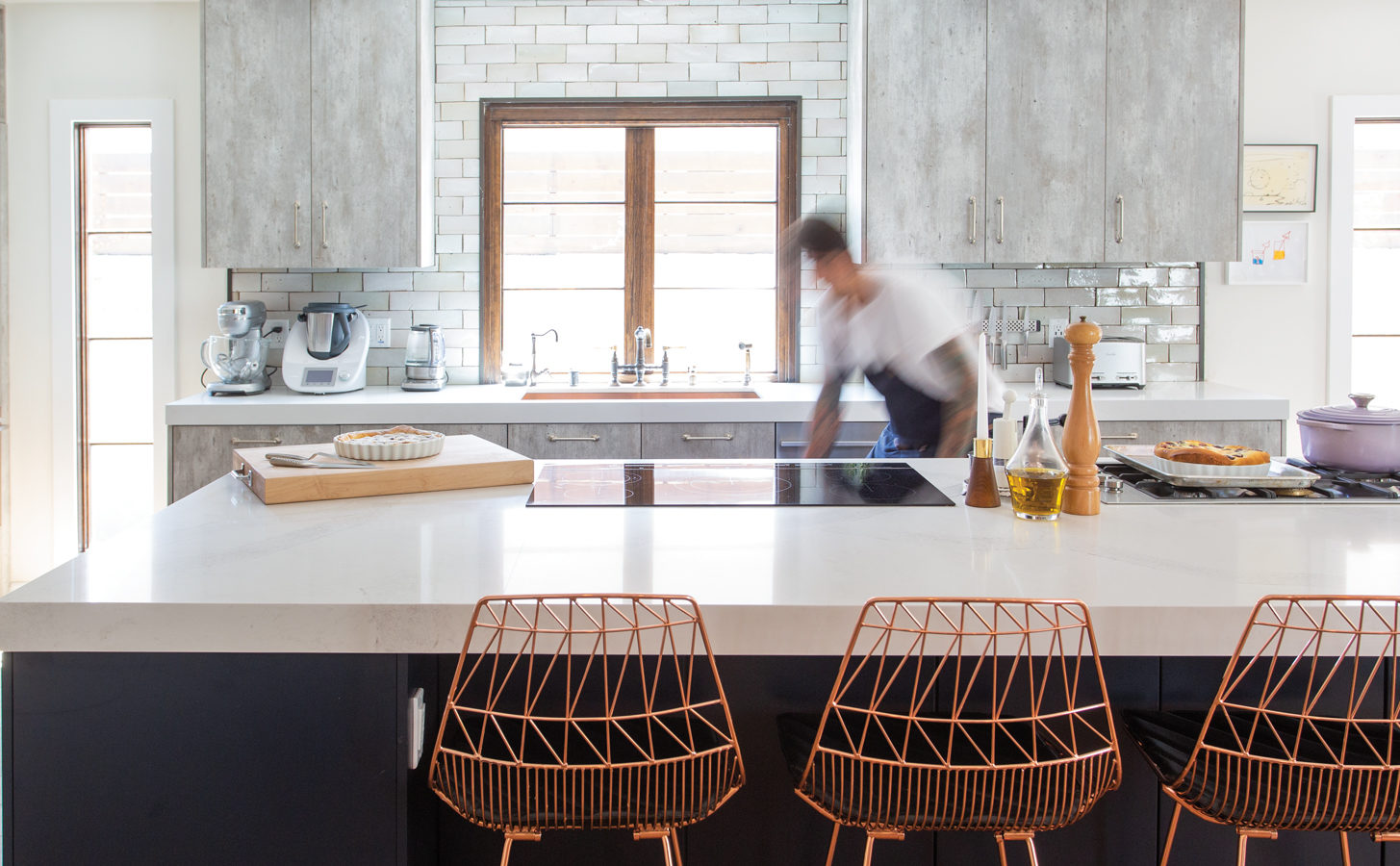
MODERN MINIMALISM
The centerpiece is a 12-foot island that houses two ovens and two cooktops (gas and induction). Copper accents include the sink and chairs. Although the Bauformat cabinets look like concrete, they are actually made of recycled wood and plastic.
“We wanted to open a restaurant in the Valley 10 years ago,” Ludo says, before any of their other eateries, because he’s lived here for 16 years. “But it took us a while to find the right space. I want this to be a restaurant for families, for birthdays and graduations. I want them to love it for the food, but also as a place to celebrate life.”
Once again, Ludo is at the forefront of a national trend—the return of classic French food and more polished dining rooms—that is playing out with notable openings such as Le CouCou in New York City, Bar Crenn in San Francisco and Bouillon in Dallas. Ludo bristles a bit at the idea, though, since it’s what he’s been cooking all along at Petit Trois.

LUDO'S OFFICE
The built-in shelves are filled with cookbooks.
When it comes to the highly acclaimed Trois Mec, which has a spare aesthetic and a modernist fixed price menu, Ludo is itching for change. He finds himself longing for white tablecloths, chandeliers and a menu serving high-end classics, as he puts it, “a luxury box of French food.” But that notion, like the chef, is constantly evolving. And it is not just about Ludo; Trois Mec is a business with partners and investors. One thing is clear: He plans on keeping it interesting—for Angelenos and for himself.
“I’m 47 now,” he continues, “and the more I grow up, the more I want to cook French food. It’s natural for a chef to follow your line. If you don’t, it’s not good.”
Suddenly it is time to retrieve the clafoutis from the oven. It is, of course, magnificent: as puffed and golden as a soufflé, rising far above the sides of the dish. The center is creamy. “Gooey!” Ludo exclaims. “The way my mother made it”—and the cherries, seeds intact, are bursting with slightly brandied juices. It tastes like the past. And the future.
Join the Valley Community






